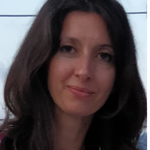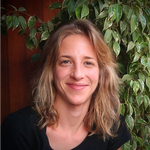Meeting goal:
In this meeting we will translate the general phrases like 'Zero Pollution' and 'Toxic Free Environment' to practical objectives and principles that contribute to achieving a water-smart society. We anticipate to have input from different angles, i.e., knowledge providers, water utilities, policy, industry etc., to create a balanced and informed position on the definition of the concept of Zero Pollution.
Breakout discussion:
Discussions in the breakout sessions will follow a tapered design. We will start working in groups of two persons from different background (or WE colleges) to discuss one of the given questions. After that, you will report back to a few larger groups that collate the input, followed by a plenary discussion of the outcome.
15:00 - 16:00
Introduction – The concept of ‘Zero Pollution’; White paper zero-pollution
Introduction – The concept of ‘Zero Pollution’; White paper zero-pollution
AGENDA
1. Introduction – Jan Hofman, Lian Lundy or Leonard Osté
• Short introduction to the concept of ‘Zero Pollution’ and the practical issues connected to it.
• White paper zero-pollution
2. Breakout 1
3. Breakout 2
4. Synthesis and resolution
• In this session a plenary discussion follows to define an informed position of the Wg Zero Pollution
5. Closing16:00 - 17:00
Breakout 1 – How can we translate “zero pollution” to a practical standard or guideline?
Breakout 1 – How can we translate “zero pollution” to a practical standard or guideline?
Breakout room 1• Q1: Analytical procedures can’t measure zero: so what does “zero” in zero pollution mean?
• Q2: Is “zero pollution” the same thing as “toxic free”? Or is “zero pollution” equal to “zero emissions”?
• Q3: Is zero pollution based on environmental concentrations or loads?16:00 - 17:00
Breakout 2 – How can zero-pollution be implemented?
Breakout 2 – How can zero-pollution be implemented?
Breakout room 2In this session we follow a similar procedure as in 2.
• Q1: Does compliance with WFD (2000), IED (2010) and/or environmental permit specifications mean you comply with zero pollution objectives?
• Q2: Does zero pollution start ‘today’, or does it include a need to remediate historic and legacy pollution?
• Q3: How will zero pollution be connected to geographic entities, e.g. critical emission levels per WFD water bodies?
Connect with 22 people attending this event









